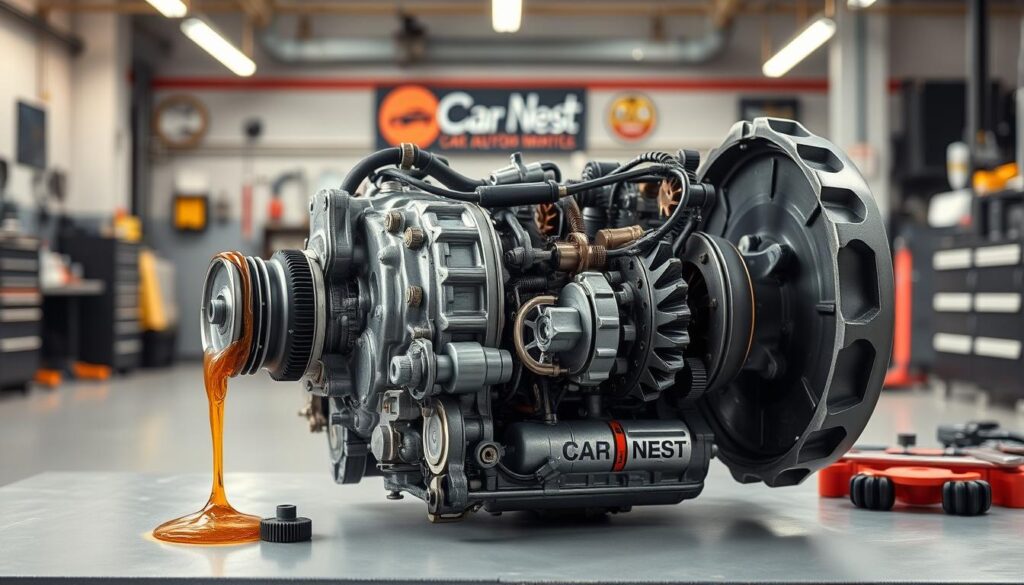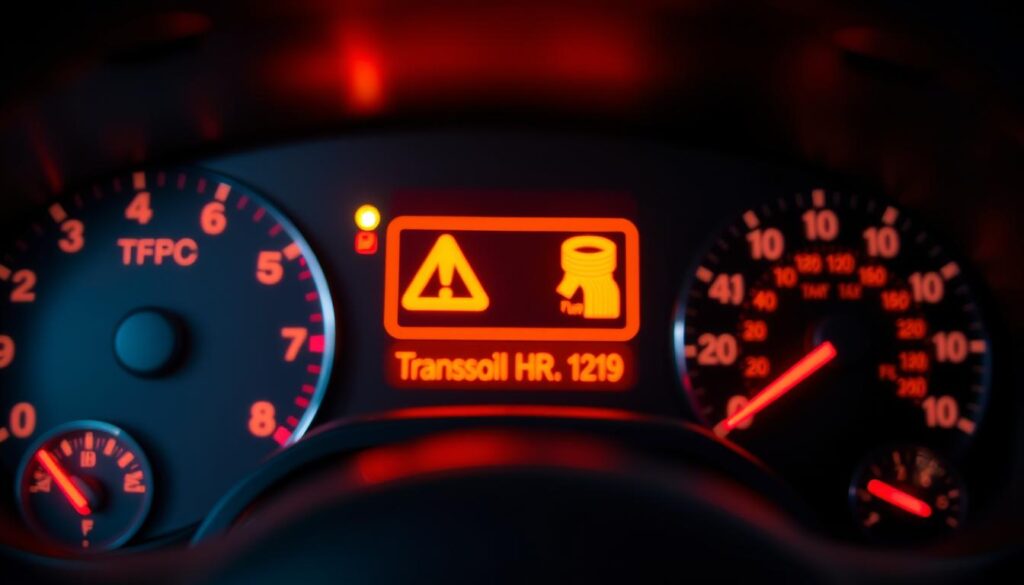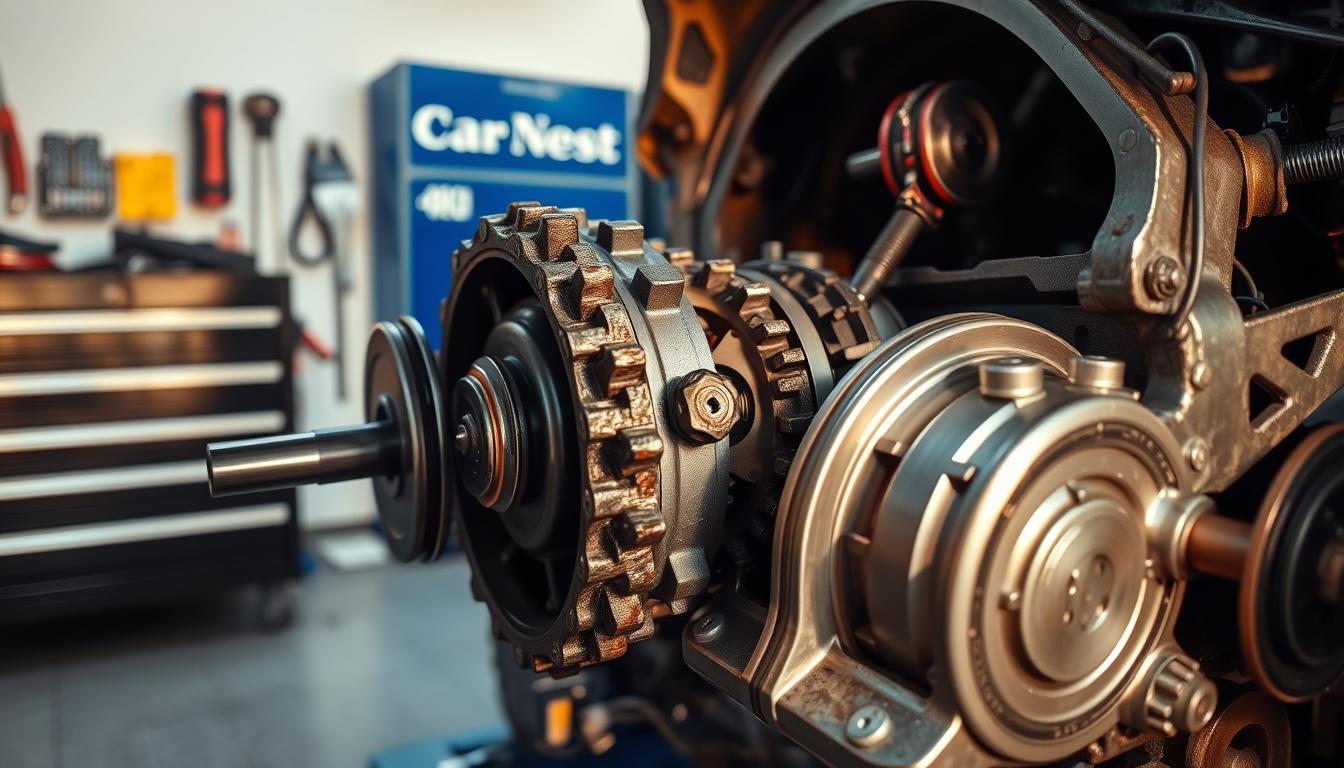Did you know that a faulty transmission can leave you stranded on the road, resulting in costly repairs? Your vehicle’s transmission is a critical component that transfers power from the engine to the wheels.
Spotting warning signs early on can help prevent expensive repairs. Many drivers overlook the early symptoms of transmission issues because they don’t know what to look for.
Today, we’ll help you understand the critical indicators that your car’s transmission might be failing. By recognizing these problems early, you can save thousands of dollars in repair costs.
Key Takeaways
- Recognizing transmission issues early can save you thousands of dollars in repair costs.
- Your vehicle’s transmission is essential for transferring power from the engine to the wheels.
- Many drivers miss the early symptoms of transmission issues because they don’t know what to look for.
- Understanding the warning signs will help you maintain your vehicle’s health.
- Being proactive about transmission maintenance can prevent costly repairs.
Understanding Your Vehicle’s Transmission System
Your vehicle’s transmission system is the backbone of its mechanical functionality, directly impacting its efficiency and longevity. The transmission is a part of the vehicle that transfers power from your engine to the rest of the drivetrain, converting the engine’s raw power into usable torque that propels your vehicle forward.
What Does a Transmission Do?
The transmission turns all the motion in your engine into something that gets and keeps your car moving. Without a functioning transmission, your car won’t drive. In essence, it’s a power transfer system that enables your vehicle to move by adjusting the gear ratio to suit different driving conditions.
Why Transmission Health Matters
The health of your transmission directly impacts your vehicle’s performance, fuel efficiency, and overall longevity. Regular transmission maintenance is the best way to prevent costly repairs and extend the life of your vehicle. As noted by automotive experts, “A well-maintained transmission is crucial for the overall health of your vehicle.”
“A well-maintained transmission is crucial for the overall health of your vehicle.”
Understanding the basic components of your transmission system helps you recognize when something isn’t functioning properly. For instance, in automatic transmissions, complex hydraulic systems and electronic components work together to shift gears at the appropriate times without driver input. Manual transmissions, on the other hand, rely on the driver operating the clutch and gear selector to change gears.
| Transmission Type | Description | Key Components |
|---|---|---|
| Automatic Transmission | Shifts gears automatically without driver input | Hydraulic systems, electronic components |
| Manual Transmission | Rely on driver to change gears using clutch and gear selector | Clutch, gear selector, manual gearbox |
Common Signs of Transmission Problems You Shouldn’t Ignore
Transmission problems can manifest in various ways, and recognizing the signs early is crucial for maintaining your vehicle’s health. Being aware of these signs can help you address issues before they become major problems.
Difficulty Shifting Gears
Difficulty shifting gears is often one of the first symptoms drivers notice. Whether you’re struggling to move the shifter in a manual transmission or experiencing hesitation in an automatic, this issue can be a sign of low or contaminated transmission fluid. For manual transmissions, a dragging clutch can also cause difficulty engaging gears or a “spongy” clutch pedal.
Slipping Gears While Driving
Slipping gears is a serious problem where your vehicle suddenly shifts into a different gear without warning, often accompanied by a sudden change in engine pitch. This can feel like driving on ice with no traction, which is dangerous, especially at higher speeds. You might hear the engine revving during a gear change when the transmission slips.
Delayed Response When Shifting
A delayed response when shifting is another warning sign. There’s a noticeable lag between when you shift and when the transmission actually engages. This issue can be due to various factors, including low transmission fluid or worn-out components. Paying attention to any changes in how your vehicle shifts can help identify developing transmission problems early.
These signs of transmission problems often start subtly but can progressively worsen over time if not addressed. If you experience any of these symptoms, we recommend having your transmission inspected by a professional before the issue escalates.

- Recognizing the common signs of transmission problems can help prevent major repairs.
- Pay attention to changes in gear shifts, as they can indicate developing issues.
- Addressing transmission problems early can save you from costly repairs down the line.
Unusual Sounds That Signal Transmission Trouble
Unusual sounds emanating from your vehicle can be more than just a nuisance; they might signal transmission trouble. These sounds are often the first indicators of a problem that could escalate if not addressed promptly.

Grinding or Clunking Noises
Grinding noises are particularly common in manual transmissions and often indicate worn synchronizers or damaged gear teeth. In automatic transmissions, grinding or metal-on-metal sounds typically suggest internal components are wearing out or have become damaged. Clunking sounds when shifting gears are never normal and usually point to a problem with the transmission mounts or internal components.
Humming or Whining When in Neutral
Humming or whining sounds when your vehicle is in neutral could indicate low transmission fluid or worn bearings within the transmission. These unusual noises may start intermittently before becoming more consistent, which is why it’s crucial to address them early. The pitch and volume of transmission sounds often change depending on vehicle speed, gear selection, and whether the engine is under load.
Many drivers mistake transmission noises for engine or exhaust issues, but there are distinct differences that a trained ear can identify. Unusual sounds are one of the most reliable early warning signs of transmission trouble, often appearing before performance issues. If you hear any of these sounds, we recommend having your vehicle inspected promptly, as things can deteriorate quickly once noises begin.
Physical Warning Signs of Transmission Issues
Transmission issues can manifest in various physical ways, and being aware of these signs can help you address problems early. Your vehicle’s transmission is a complex system, and ignoring these warning signs can lead to more severe damage over time.
Burning Smell Coming From Your Vehicle
A burning smell is one of the most concerning transmission warning signs. This odor can indicate that your transmission is overheating or that the transmission fluid is old and burnt. If you notice any unusual burning smells coming from your car, it’s essential to visit an auto shop right away to prevent further damage.
Transmission Fluid Leaks
Leaking transmission fluid is one of the easiest transmission problems to identify. If you notice a red, sweet-smelling fluid underneath your car, let your mechanic know. They need to check the transmission fluid level and inspect for possible leaks. Fresh transmission fluid has a sweet or tart smell, while burnt fluid has a distinctly unpleasant odor.
Shaking or Vibrating During Gear Changes
Shaking or vibrating during gear changes is never normal and indicates that internal transmission components may be worn or damaged. If your car shudders or jerks when shifting gears, we recommend having it inspected immediately.
| Warning Sign | Description | Recommended Action |
|---|---|---|
| Burning Smell | Indicates overheating transmission or burnt transmission fluid | Visit an auto shop immediately |
| Transmission Fluid Leaks | Red, sweet-smelling fluid underneath the car | Check transmission fluid level and inspect for leaks |
| Shaking or Vibrating | Occurs during gear changes, indicates worn or damaged components | Have the car inspected immediately |

Dashboard Indicators of Transmission Problems
Modern vehicles are equipped with sophisticated dashboard warning systems that can alert drivers to potential transmission problems. These warning systems are designed to detect issues before they become serious, allowing for timely intervention.
One of the most common dashboard indicators of transmission problems is the check engine light. The check engine light is often the first sign that something is amiss, as it is connected to a network of sensors that monitor various aspects of your vehicle’s performance, including the transmission system.
Check Engine Light Illumination
The check engine light can indicate a variety of issues, ranging from minor problems like a loose gas cap to more serious issues such as transmission problems. When this light illuminates, it’s essential to have your vehicle scanned for diagnostic trouble codes to determine the exact cause.
Other Dashboard Warning Signs
In addition to the check engine light, some vehicles may display other warning signs on the dashboard, such as dedicated transmission warning lights or messages on digital dashboards. These indicators can signal that your vehicle is experiencing transmission issues, such as running hotter than normal, which may need immediate attention to prevent damage.

What to Do When You Notice Transmission Problems
When you suspect transmission issues, taking immediate action is crucial to prevent further damage. Transmission problems can range from a defective solenoid costing $150 to a complete transmission replacement costing up to $2,500. The key to avoiding expensive repairs is prompt maintenance and repair.

Immediate Steps to Take
If you notice transmission problems, the first step is to check your transmission fluid level and condition. Low or degraded fluid is often the culprit behind transmission issues.
It’s also crucial to avoid aggressive driving when you suspect transmission problems, as this can exacerbate the issue and cause further damage.
For manual transmissions, adjusting your clutch usage can sometimes temporarily alleviate symptoms.
When to Contact a Professional
We recommend contacting a professional transmission repair specialist at the first sign of trouble. Continuing to drive with serious transmission problems can turn a minor repair into a complete transmission replacement.
Our service team is available via WhatsApp at +44-7822010953 to provide guidance and schedule transmission maintenance or repairs.
“Regular transmission fluid changes and maintenance can prevent many common transmission problems and extend the life of your transmission.”
Conclusion: Protecting Your Transmission for the Long Haul
With the knowledge of common transmission problems, you’re now better equipped to safeguard your vehicle. Regular maintenance is crucial to prevent transmission trouble and extend the life of your vehicle’s transmission system. Checking your transmission fluid regularly can help you catch potential issues before they cause serious damage.
By being aware of the warning signs, such as burning smells, fluid leaks, and unusual noises, you can take prompt action to address minor issues before they escalate into costly repairs. Our team is here to provide comprehensive transmission services and repairs to keep your car running smoothly. For any transmission-related questions or to schedule maintenance, feel free to contact us via WhatsApp at +44-7822010953.


